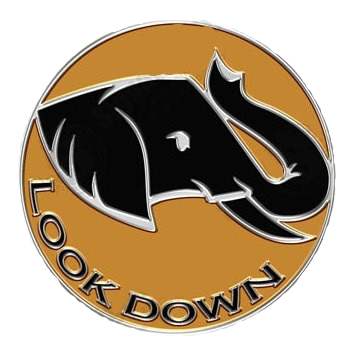THE INSTITUTE FOR COLLAPSONOMICS first appeared in London in 2009. Its founders were Kalam Ali, Mike Bennett, Mamading Ceesay, Vinay Gupta and Dougald Hine. If you suspect you might be a member of the Institute, then feel free to declare this when registering for conferences and events. Just be aware that you do so at your own risk.
THE BLACK ELEPHANT is the emblem of collapsonomics, an unholy hybrid of two boardroom clichés: it’s an event that when it happens, everyone will try to pretend was a “black swan”, when all along it was the “elephant in the room”. The phrase was coined by our friend Lloyd Davis on 24 April 2009, a story told here.

